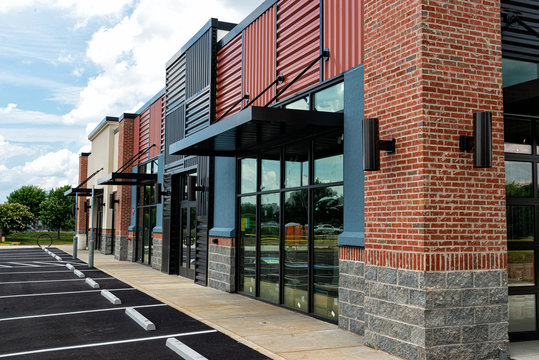
Coffee has become one of the most profitable drivers in grocery and convenience retail. It is not just a beverage, it is a high-margin anchor that drives traffic, cross-purchases, and customer loyalty. But behind every successful coffee program is a network of machines, parts, and preventive maintenance that must run reliably every day. For facility leaders, coffee equipment is no longer a side category, it is a core asset class that requires disciplined management.
Coffee’s Role in Profitability
The data makes it clear. In convenience, beverages represent nearly half of all trips and drive margins of 40 percent or more, significantly higher than other product categories. Coffee specifically remains a customer favorite, with breakfast sandwiches and hot beverages accounting for 40 percent of prepared food sales.
By 2024, foodservice overall contributed 28.7 percent of in-store sales and 39.6 percent of gross margin dollars for convenience operators. In grocery, the rise of in-store cafés and grab-and-go offerings has elevated coffee into a centerpiece of fresh and prepared strategies. A functioning coffee machine does more than sell cups, it drives incremental purchases of baked goods, breakfast, and snacks.
The Cost of Downtime
The financial risk of downtime is significant. A single bean-to-cup machine can generate tens of thousands of dollars per year in revenue. Data shows prepared food sales average $51,500 per store per month in convenience, much of it tied to hot beverage programs. If a machine is down for even one week, the loss can exceed $12,000 in missed sales at one location.
Worse, downtime erodes customer trust. Shoppers expect coffee to be available every morning. A missing option sends them to competitors and can permanently shift buying behavior. Repeat outages or poor quality brews translate directly into loyalty loss.
Rising Repair and Maintenance Costs
Coffee equipment is complex. Machines require calibration, cleaning, and replacement parts to maintain quality. As with other facility categories, repair and maintenance costs are rising:
- In grocery, repairs and maintenance are up 17.3 percent over the past two years.
- In convenience, total repair costs climbed 38 percent between 2021 and 2023, outpacing overall inflation.
For coffee programs, these increases can be amplified by improper maintenance. Machines that are not cleaned or serviced regularly experience scale buildup, pump failures, and poor extraction, all of which drive more frequent and costly emergency calls.
The Preventive Maintenance ROI
Preventive maintenance is particularly critical for coffee equipment. Industry research shows unplanned maintenance costs 3 to 9 times more than scheduled preventive care.
Preventive programs for coffee machines extend equipment lifespan, stabilize flavor quality, and reduce repair volume. Case studies show portfolios that embed preventive maintenance see 35 to 40 percent fewer repair work orders after three years compared to those that defer. For coffee specifically, this means fewer breakdowns during peak morning rush, where even one lost hour can represent hundreds of missed transactions.
Technology Driving Coffee Reliability
Advanced platforms are transforming how coffee equipment is managed. VixxoLink, for example, integrates invoice validation, provider oversight, and AI-enabled troubleshooting.
- AI tools like VITA provide field technicians with real-time troubleshooting guidance, reducing misdiagnosis and increasing first-time fix rates.
- Invoice audits prevent inflated charges, parts markups, and unnecessary service calls, saving portfolios millions annually.
- Dashboards and reporting give facilities leaders visibility into machine uptime, repair frequency, and provider performance across hundreds of sites.
When scaled across thousands of coffee machines nationwide, these tools translate into measurable cost savings and stronger uptime.
The Lifecycle Management Challenge
Coffee machines are capital-intensive. Bean-to-cup systems can cost $10,000 to $15,000 per unit, not including installation and ongoing service. Without clear lifecycle planning, operators face sudden spikes in capital replacement costs when machines fail unexpectedly.
A lifecycle approach includes:
- Preventive maintenance schedules to maximize lifespan.
- Standardized asset tracking to monitor machine age, service history, and performance.
- Data-driven replacement planning that aligns capital investment with end-of-life forecasts.
This disciplined approach allows facilities leaders to avoid sudden, large-scale reinvestments and instead phase upgrades strategically.
Coffee as a Brand Differentiator
Beyond economics, coffee programs are brand statements. In convenience, premium coffee has become a way to compete directly with QSRs and cafés. Bean-to-cup programs communicate freshness and quality. In grocery, in-store cafés differentiate the shopping experience, keeping customers longer and encouraging repeat visits.
But these brand benefits collapse if equipment fails. A cold cup, a broken dispenser, or a machine labeled “out of order” undermines the entire program. For facilities leaders, uptime is brand equity.
What Leaders Must Do
For VPs of Facilities and grocery or convenience directors, coffee service equipment requires the same strategic rigor as refrigeration or HVAC. To succeed, leaders must:
- Measure downtime relentlessly. Track machine uptime as a KPI tied directly to sales and customer experience.
- Audit invoices consistently. Eliminate hidden charges that inflate repair spend.
- Embed preventive programs. Routine cleaning, descaling, and servicing prevent breakdowns and stabilize flavor quality.
- Plan lifecycle replacements. Treat coffee machines as strategic assets, not incidental equipment.
- Use data as leverage. Benchmark performance across providers and locations to standardize best practices.
Conclusion
Coffee equipment has become a mission-critical asset for grocery and convenience retailers. With beverages driving nearly half of trips and margins exceeding 40 percent, uptime is directly tied to profitability and brand loyalty. Yet downtime, rising repair costs, and poor maintenance remain costly vulnerabilities.
The solution is not to cut back on service, but to manage smarter. Preventive maintenance, AI-driven support, and invoice validation reduce hidden costs and protect uptime. Lifecycle planning ensures capital is invested strategically, not reactively.
In the fight for profitability and customer loyalty, coffee programs may be one of the highest ROI investments retailers can make. For facilities leaders, managing coffee equipment effectively is no longer optional. It is the difference between brewing profits and losing customers to the competition.
Let’s talk.
Get in touch and fill out the contact form below!




